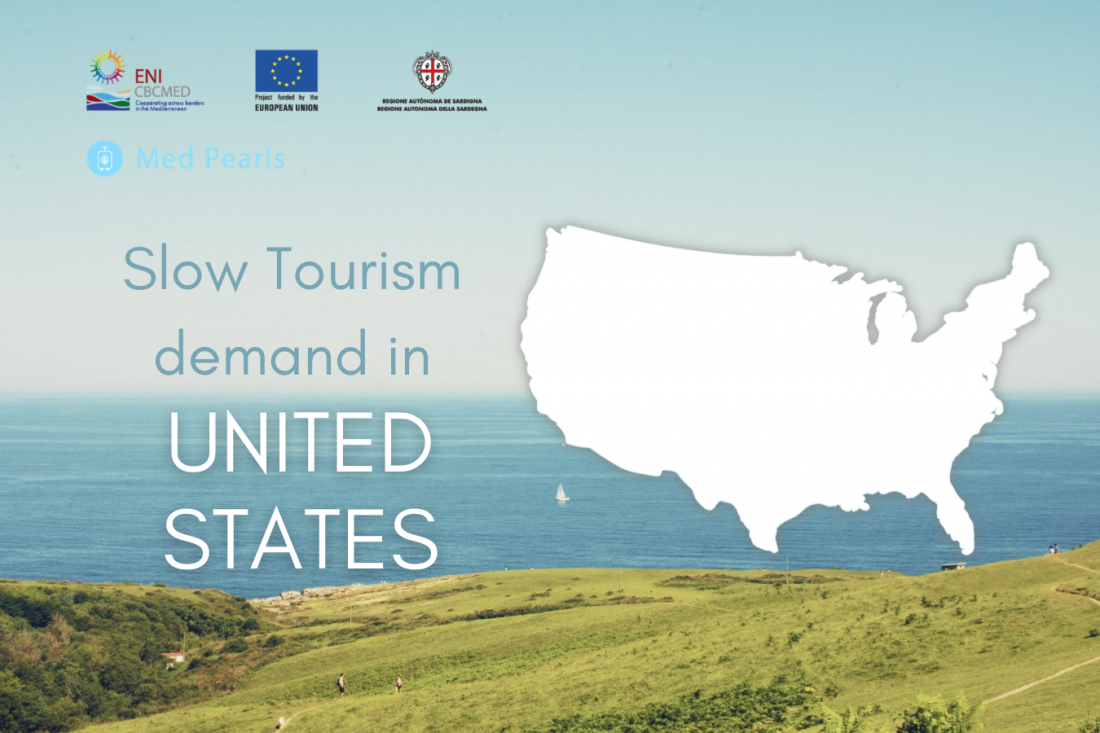Med Pearls : faits marquants sur les États-Unis en tant que marché potentiel pour le Slow Tourism.

Ce contenu est disponible uniquement en anglais
Proceeding with the description of the key outbound markets for Slow Tourism, in this article we are going to focus on how tourism agents should create, promote, and market their slow tourism products to the United States. This follows the series of articles about the Med Pearls research projects on the international demand for Slow Tourism (the ‘Research study on Slow Tourism international trends and innovations’ and the ‘Analysis of the Slow Tourism International Demand’).
With a population of 332 million people, the United States ranks in the second place in the list of tourism outbound markets towards the countries of the Med Pearls project. In 2018, it ranked as well in second place for international tourism expenditure (total of 144,2 US$bn), with an average expenditure of US$194,4. From the total amount of international trips in 2018, 28% of Americans travelled to Europe and 5% to Africa & Middle East countries. Italy was the most visited country of the Med Pearls destinations with 4,23 million visitors in 2018. Furthermore, the research highlights that during their trips abroad, American travellers tend to visit an average of 1.8 countries, with 21% visiting three or more destinations every trip.
Regarding type of vacations, the research identified that more than half of all overseas trips were made for vacational/holiday purposes. Data shows, that in 2018, the main reasons for travelling to Europe among American travellers were: vacation/holiday (72,7%), visiting friends and relatives (31,7%), business trips (9,3%), education trips (7,7%), and convention/conference/trade shows (4,2%). On the other hand, although the research shows that there are no publicly available studies about the American slow tourist profile, two profiles that share common aspects have been discovered: the adventure traveller and the sightseer traveller profile. The first one tends to look for trips that include at least two of the following elements: physical activity, natural environment, and cultural immersion; the latter, being relatively affluent and with time on their hands, tends to make the most of opportunities to travel and have a keen interest in history, culture, and the arts.
As shown in other markets, one of the main highlights of the market research has been that the tour-operators that sell ‘slow tourism products’ or that have a ‘slow’ philosophy, are usually small or medium-size companies. More and more tour operators are looking for products linked to responsible and sustainable tourism, and in fact some of them are commercialising their products under the brand “Slow Travel Tours”. This one is an informal affiliation of a small group of tour operators that offer products in Europe. Furthermore, among other characteristics, the investigation highlights that US operators tend to have higher prices than European ones, and that they have cross-selling in English speaking countries.
Regarding tourism fairs, in the US there are no travel fairs dedicated only to ‘slow tourism’. Nevertheless, the research identified an increasing trend in fairs that have sections or stands dedicated to responsible or sustainable tourism. Two of the main travel fairs in the US are the Travel & Adventure Show (that presents a series of 11 different shows around different cities of the US) and the New York Times Travel Show (the largest travel fair in North America).
Besides these outcomes, the reader will find that the research also developed an intuitive guide of recommendations to help in the creation of slow tourism products and how to get tour operators interested in their “slow destinations" and products. For further information on this topic, the US market analysis, or the other studies done, you can check the links below:
- Market research on Slow Tourism Demand (US list of operators, fairs, media and other relevant info)
- United States - Slow Tourism International Demand
- Manual and Analysis of the Slow Tourism International Demand
- Recommendations - Slow Tourism International Demand







